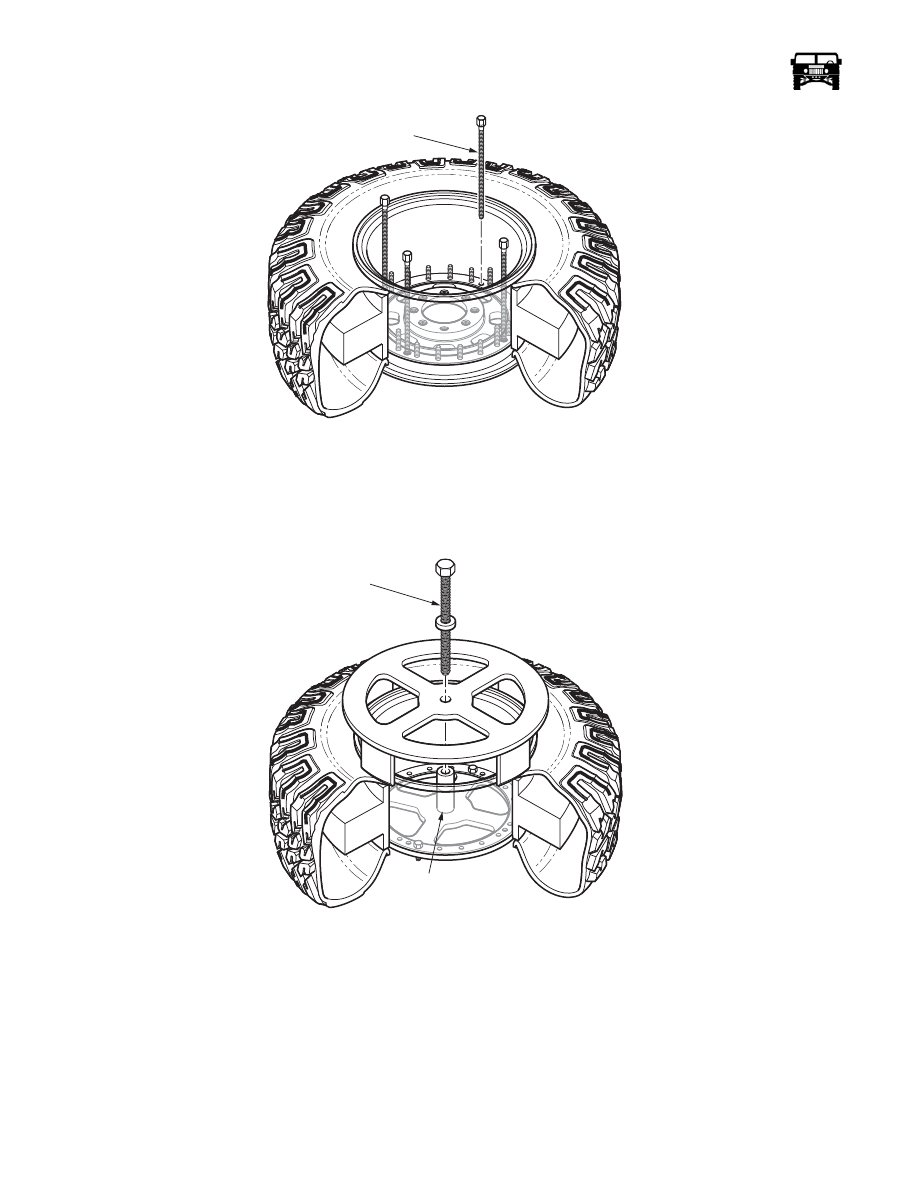Hummer H1 (2006+). Manual - part 214

6-6
Wheels and Tires/Central Tire Inflation System (CTIS)
_________________
Figure 6-6: Wheel Separation Bolts
13. Remove the o-ring seal from the inner rim half. Discard the o-ring seal.
14. Assemble the inner bead separator tool (J–45770) by placing the half with the welded center shaft against the o-ring surface of
the inner wheel half and secure with the two bolts and washers provided (Figure 6-7). Place the other half of the tool on the
inner tire bead surface and install the large press bolt through to the threaded hole in the shaft.
Figure 6-7: Inner Half Bead Separator
15. Rotate the press bolt until the tire bead is released from the inner wheel half. Remove the tool and the inner wheel half from
the tire/runflat assembly.
WARNING: Balance weights contain lead. Wash hands after handling.
16. Remove the balance weights from the rim halves. Discard the balance weights.
17. Lay the tire flat.
WARNING: To avoid injury, ensure run flat compressor strap is centered around run flat.
03-S06-003
SEPARATOR
BOLT
03-S06-004
CENTER
SHAFT
PRESS
BOLT